Dr. Irfan Hussain an Assistant Professor in Robotics and Mechanical Engineering at Khalifa University, Abu Dhabi, UAE. He is author of one book, more than 70 articles and 3 inventions. He is Associate Editor of proceedings of the Institution of Mechanical Engineers, Part C: Journal of Mechanical Engineering Science. Research Topic Editor on "Wearable Robots and Sensorimotor Interfaces: Augmentation, Rehabilitation, Assistance or substitution of human sensorimotor function" (ID 21096), frontiers in Neurorobotics. Guest Editor, Special Issue "Design and Development of Vision-Based Tactile Sensors" A special issue of Sensors (ISSN 1424-8220). He is an Associate Editor of IEEE/ RAS ICRA-23, ICRA-22, ICRA-21, RAS/EMBS BioRob-18 and. He received his PhD degree in robotics from University of Siena, Italy. He was a post doctorate researcher at Robotics Institute at Khalifa University of Science and Technology, Abu Dhabi, UAE. He also worked as a post doctorate at Siena robotics and system lab (SIRSLab), Italy. He received his 2nd Level Master degree in Automatica and Control Technologies from Politecnico Di Torino, Italy. He got MS degree in Mechatronics Engineering from National University of Sciences and Technology, Pakistan. He received BE mechatronics engineering from Air University, Pakistan. He worked as research assistant in Gyeongsang National University, South Korea, from 2012 to 2013. He was visiting researcher in Centro Ricerche Fiat (CRF), Italy. He worked as assistant manager engineering in Trojans Pakistan from 2008 to 2011. His research interests include: Marine Robotics, Healthcare Robotics and Industrial Robotics.
Marine Robotics - KUCARS-T3
Our oceans offer immense opportunities yet face sustainability challenges due to environmental degradation. KUCARS Theme 3 focuses on robotic technologies for deep-sea monitoring and interventions, addressing complexities like currents, tides, and limited visibility. Underwater challenges include lack of GPS and difficulty in mapping using SLAM-based localization. Theme 3 aims to tackle these marine robotics research issues. Key objectives include: (O1) AI-driven navigation for underwater robots, (O2) AI-based marine environment mapping, (O3) multi-sensory active perception underwater, and (O4) algorithms for underwater grasping and manipulation.
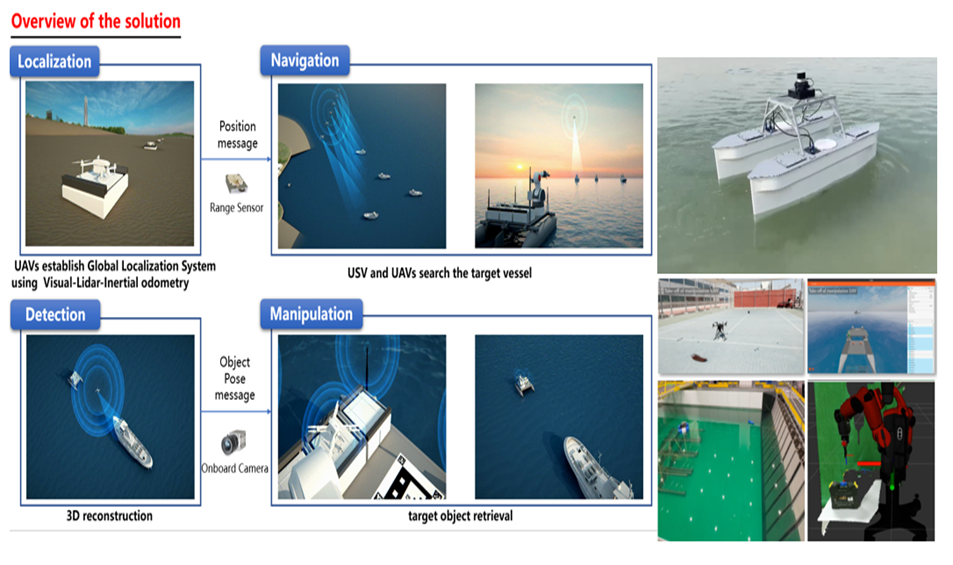
MBZIRC 2023: The Mohamed Bin Zayed International Robotics Challenge - ASPIRE
The MBZIRC Maritime Grand Challenge is focused on deploying robot technology for ensuring maritime security. The challenge involves a heterogeneous fleet of autonomous aerial and surface vehicles collaborating in a relatively large GNSS-denied environment along the coast of Abu Dhabi, to detect predefined targets and to retrieve predefined objects from the targets. This is a highly complex problem and the key technical challenges include:
We will use a robotic system consists of 20 UAVs and 1 USV (with robotic arm) to solve the MBZIRC 2024 Maritime Grand Challenge tasks. These will include several inspection UAVs (up to 10) to search the 10 square km area, in a formation, to detect the targets. One or more inspection UAV will also approach the target vessels to completes the 3D modeling. Once the targets are identified, the USV will navigate to the target vessel. A transportation UAV will take off from the deck of the USV to pick up the light object(s) on the target vessel using airborne vision and will return back to the USV deck to place the object(s). Two transportation UAVs will be used to manipulate the heavy object to the edge of the target vessel. The USV robot manipulator will then pick up the heavy object and place on the deck.
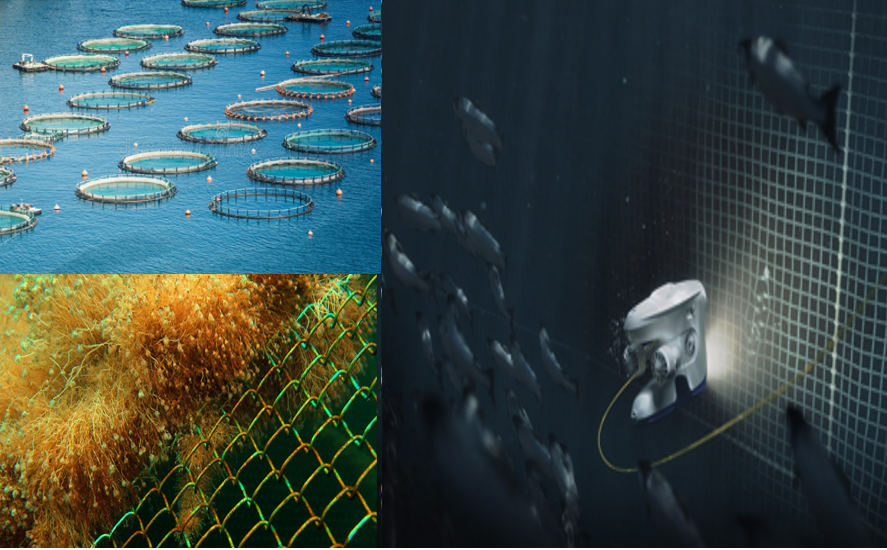
Autonomous Underwater Robotic System for Aquaculture Applications
UAE aims to meet its fish demand through expanding aquaculture infrastructure. Fish are cultured in sea-enclosures called fish cages/net pens, requiring regular monitoring for their well-being and cage maintenance. Current maintenance involves costly divers and multiple remotely operated vehicles (ROVs). Our project seeks to create an autonomous underwater robotic system for efficient aquafarm monitoring. We'll utilize advanced computer vision with ROVs to detect fish net defects and assess fish health. This innovative approach aims to enhance the sustainability and profitability of UAE's aquaculture industry.
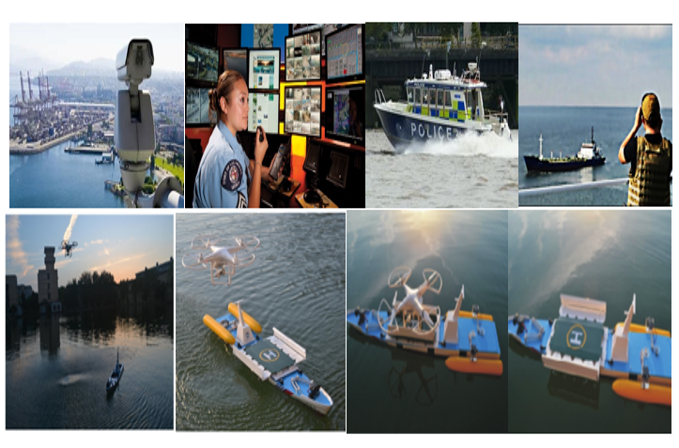
Autonomous Robotic Systems for Port Inspection - Chinese Ministry of Science and Technology
This project aims to enhance port security through an autonomous inspection and surveillance system consisting of a USV (Unmanned Surface Vehicle) and multiple UAVs (Unmanned Aerial Vehicles). The USV focuses on water surface surveillance, while UAVs monitor airspace around the USV. In detecting unusual activities, the system alerts a base station. Key hardware includes sensory-equipped USVs and UAVs with cameras, laser range finders, and grippers. Software advancements involve deep learning for activity identification, path planning, collision avoidance, and autonomous landing/grasping techniques. The design utilizes dynamic simulators like Gazebo and the Robot Operation System (ROS), with later real-world hardware integration.
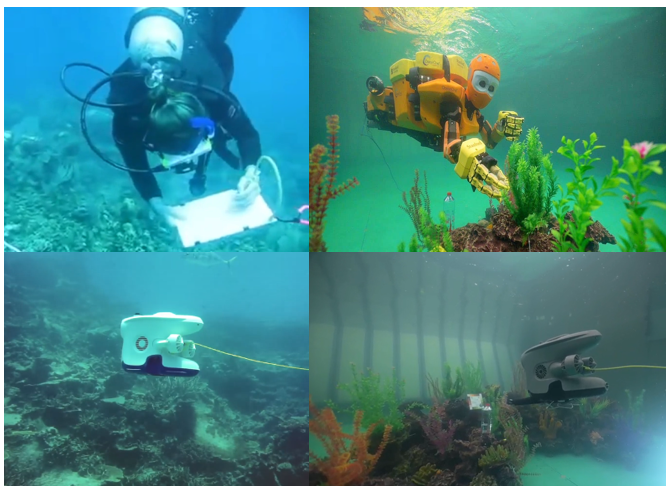
Autonomous Coral Reef Inspection - ENEC
Coral reefs are an important indicator of marine ecology health and are under unprecedented threats due to human activities including global warming, pollution, and damage from human activity. However, traditional coral reef monitoring relies on human observers and is technically difficult requiring human divers to operate in challenging environments. The fast-emerging field of marine robotics has the potential for high impact in monitoring reef ecology with better spatial and temporal ranges and resolutions. Current underwater robotics and sensor technology is still in its infancy and has limited ability to monitor reefs with desired spatial and temporal ranges and resolutions. In this project we are extending marine robot capabilities to monitor reefs.
Khalifa University-KUCARS and Stanford University-SRL: Marine Robotics Research Collaboration
Our oceans represent both a vast wealth of opportunity and an immediate challenge in sustainability. As we seek to exploit resources the oceans offer, we are met with environmental factors that are jeopardizing much of its ecosystem. This colloboration looks at the fact that human efforts to capitalize on theses resources must do two things: develop means for humans to perform at depths the sorts of activities we so easily do on land – build, observe, repair; and correct and stabilize the underwater environment. Khalifa University and Stanford Univerity propose working together on these issues to develop marine robotic technologies that enable operations at depth. Our collaboration will focus on investigating: (i) Marine Robotics for Environment Monitoring, Critical Infrastructure Inspection, and Interventions including Maintenance Operations; and (ii) Human-Robot Interaction capabilities incorporating Haptic Interfaces with Embodied and Computational Intelligence.
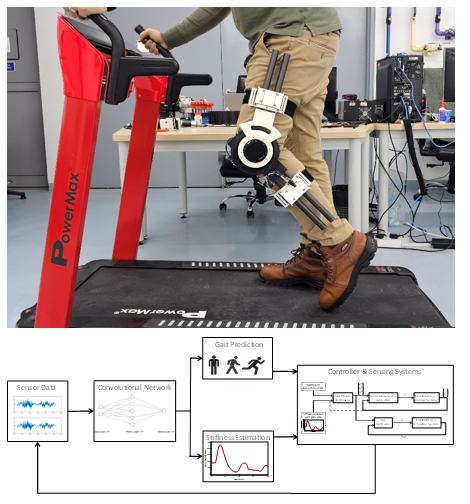
Compliant Knee Exoskeleton for Rehabilitation and Assistance of post-stroke hemiplegic patients - ARIC/Mubadala
Stroke survivors often struggle with mobility, especially in the knee joint, a vulnerability affecting around 25% of adults, limiting function and life quality. Traditional rehabilitation involves repetitive limb movements assisted by therapists, demanding consistency and labor intensity. Robotic devices like Exoskeletons offer rehabilitation advantages, but face portability and actuation challenges. We introduce a compliant knee exoskeleton with stiffness modulation resembling the human knee during gait, offering effective patient assistance.
User-Defined Sixth Finger: Designing A Robotic Assistive Device to Support Stroke Patients - Swedish Government – STINT
After a stroke, many face challenges with hand and finger movements, impeding basic tasks like holding objects due to conditions like hemiplegia. To aid these individuals, supernumerary robotic limbs have been developed to either augment the functioning limb or provide additional support for the impaired one. This research is twofold: developing the assistive technology and implementing user-centric evaluation methods, prioritizing the patient's experience. The teams at Chalmers University's Interaction Design Unit and Khalifa University's Mechanical Engineering Department collaboratively bring the necessary expertise.
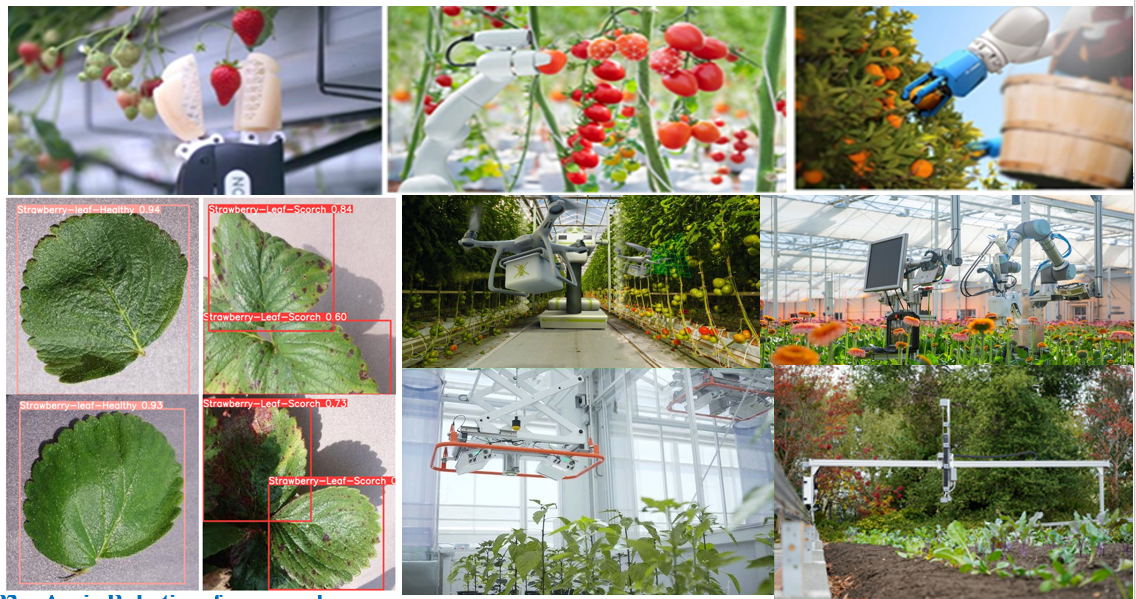
VRI: AI driven Robotics for Greenhouse and indoor farming - ASPIRE
The agriculture sector confronts challenges from population growth, climate change, and environmental degradation, amplified by excessive pesticide use. Historically, industrial revolutions reshaped agricultural practices, with the fourth revolution (4AR) now utilizing Robotics, AI, and IoT for tasks like indoor farming. This project focuses on AI-based localization and robot-assisted harvesting, with technology addressing complexities like varying crop maturity and environmental factors. Central to this is real-time monitoring, optimizing crop growth models specific to local conditions, and advancing robotic systems for indoor farming. Our aim: a high-quality, cost-effective agricultural solution that prioritizes sustainability and leverages technology to maximize yield and efficiency.
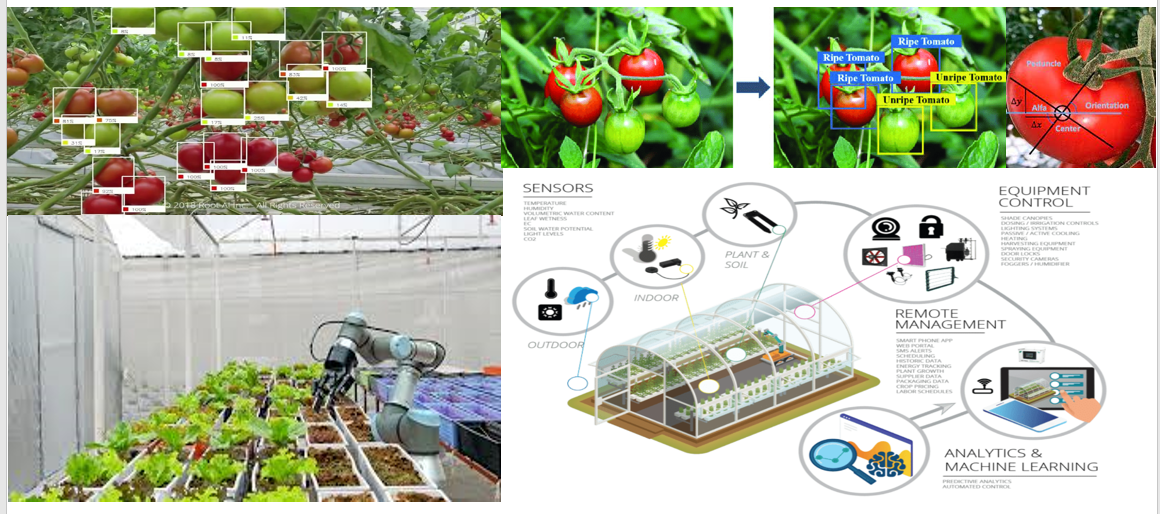
Agri Robotics for greenhouse farming - KUCARS-T4
This Theme will investigate problems related to industrial robotics, focusing on AI driven mobile grasping and manipulations. The theme will particularly focus on the application of robotics in agriculture. Robotics has the potential to revolutionize agriculture by performing a variety of tasks, including planting, inspection, harvesting, and weeding. Modern robots perform a wide range of manipulation tasks with high precision, speed, and efficiency. However, there are still many open research challenges in robot manipulations, before they can be deployed autonomously in unstructured environments. Advances in AI are helping to address these challenges and enable the development of more intelligent robots for a wider range of applications, such as agriculture, conservation and space exploration.
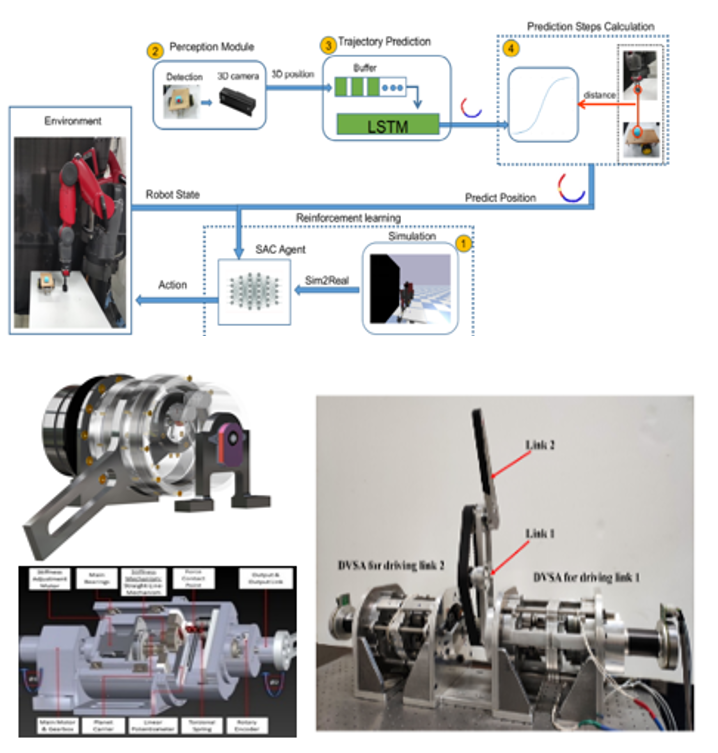
Compliant Manipulation - KUCARS-T3 (2018-2023)
Robotic technology has the potential to reduce costs and to make manufacturing systems more adaptable to real-world variability. Since humans are still key participants in manufacturing processes, co-working scenarios are common where robots assist, collaborate, and work with humans sharing the same workspace. This project aims to develop new compliant robotic manipulation systems targeting safe human-robot collaboration in complex industrial tasks. This project focuses on safe human-robot interactions based on novel mechanical system design, advanced sensing technology, intelligent control algorithms, and human intention prediction. A new robot manipulation system with switchable compliant and rigid working modes for safe human-robot co-working will be developed and benchmarked with state-of-the-art research and commercial manipulator systems, like the Baxter robot and KUKA iiwa.
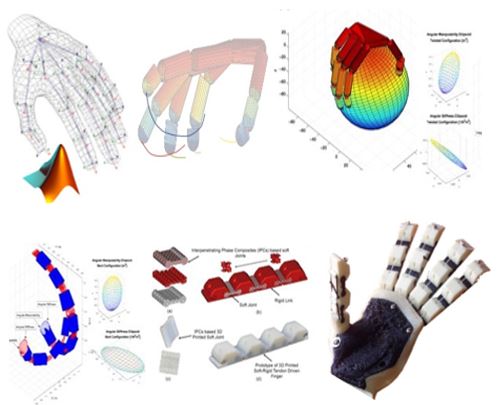
Robotic Hands with Embodied Human like Compliance and Sensing for Soft Manipulation
The complexity of robotic grasping merges design, actuation, sensing, and control. My innovations have resulted in robust and intuitive robotic hands, drawing inspiration from human hand synergies. Using mathematical models and advanced materials, as shown in Fig, we've achieved significant advancements. I've notably contributed to grasping algorithms and neuromorphic event-based tactile sensing. Our team is also focusing on complex environment grasping algorithms. My goal is to leverage this technology across sectors, especially in handling delicate and irregular items in fields like agriculture and medicine.
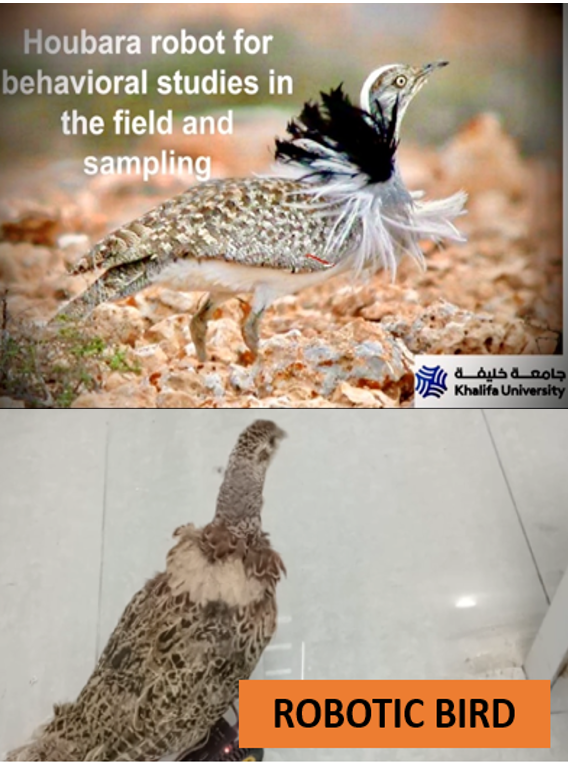
Hubot: Houbara robot for behavioural studies in the field and sampling - International Fund for Houbara Conservation (IFHC)
Studying animal behaviour requires appropriate perception systems, but these can disturb natural behaviours, especially in birds. To minimize disturbances, robots mimicking certain bird species have been introduced for behavioural studies in the wild. These robots, equipped with perception systems, closely observe birds without alarming them and record behaviours in real-time. Robots can also interact with birds using movements, postures, and playback recordings, introducing new data collection dimensions like inducing mating behaviour. A unique robot application would be collecting semen from wild males, benefiting conservation programs by capturing genetic diversity without removing individuals. For this project, we aim to develop a Houbara Robot for observation, interaction, and semen collection in their natural habitats.
Saveral PostDoc positions are avaliable under following projects. To apply please send you CV at irfan.hussain@ku.ac.ae